Crisp yet tender with bursts of sweet and savory flavors, Kinpira Renkon, or Japanese Lotus Root Stir-Fry, is a classic home-cooked side dish.
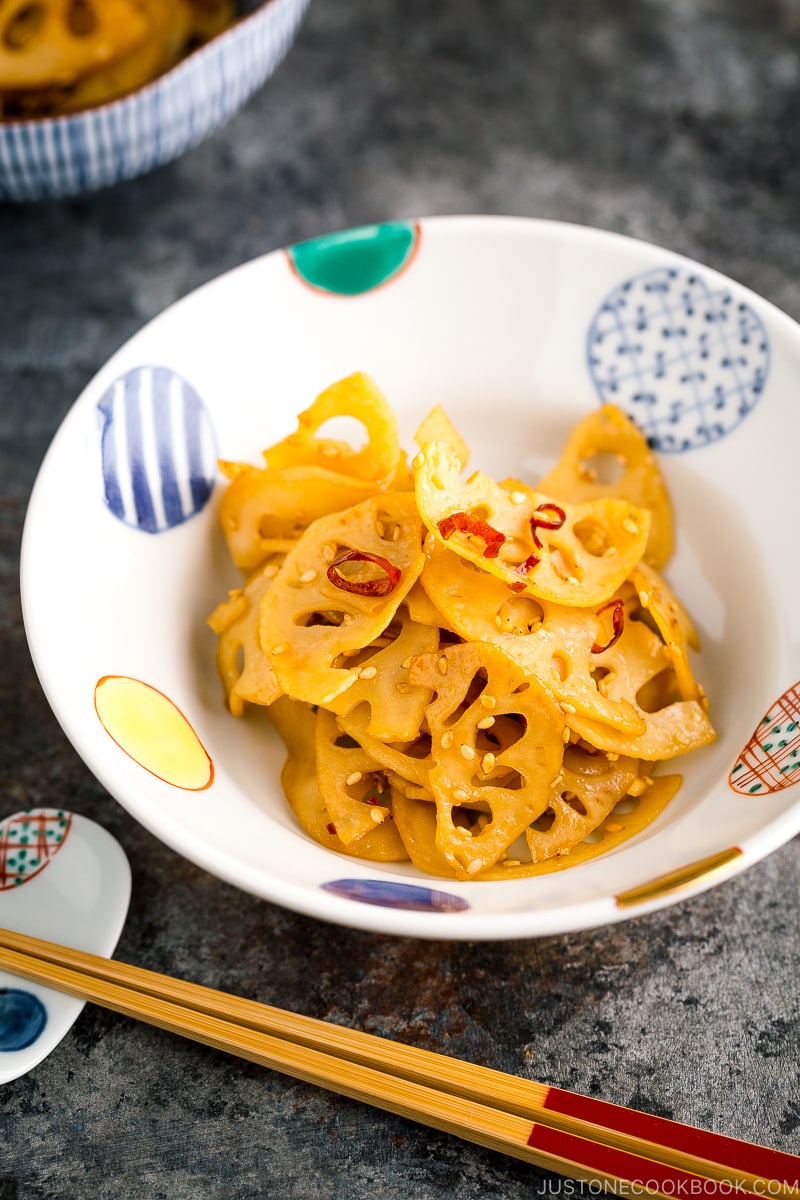
One of the reasons I love Japanese home-cooked meals is that root vegetables are used in a whole range of dishes. From gobo (burdock root), renkon (lotus root), satoimo (taro root), daikon radish, sweet potatoes to yam, each one of them has its unique flavor profiles and nutrient qualities. When it comes to a simple weeknight side dish, my favorite is this Kinpira Renkon or Japanese Lotus Root Stir Fry.
I absolutely love the texture of crunchy root vegetables. They can be prepared in every way you can imagine – roasted, stir-fried, pan-fried, deep-fried, or even steamed. To me, they are humble vegetables with lots of potential and I love to find the best ways to enjoy them.
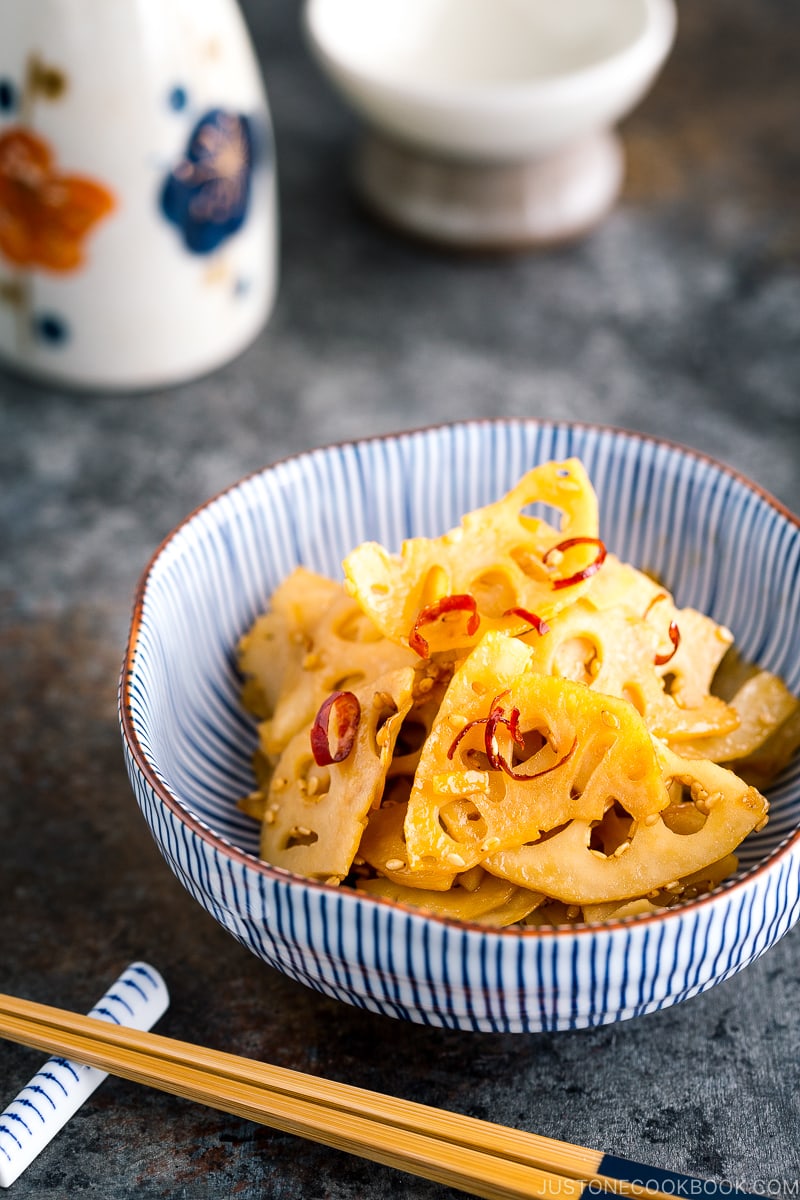
What is Kinpira Renkon?
I gave Kinpira Renkon an English name “Japanese Lotus Root Stir Fry”. It is not a direct translation of what Kinpira Renkon is, but I assume people may search for the recipe using similar terms in English.
The actual name, Kinpira Renkon (金平蓮根 or きんぴら蓮根), comes from the cooking technique “Kinpira,” which is a Japanese cooking style of “saute and simmer.”
This technique is commonly used to cook root vegetables. You might have seen or tried my Kinpira Gobo recipe where julienned gobo (burdock root) and carrots are sautéed and simmered down in a seasoned sauce.
Other ingredients that are commonly used for Kinpira cooking technique include root vegetables, seaweed-like hijiki, tofu or wheat gluten (fu 麩), and meat (chicken, pork, beef). They are first stir-fried and then simmered in soy sauce and mirin seasonings, and often given a little spice treatment with thinly sliced chili peppers.
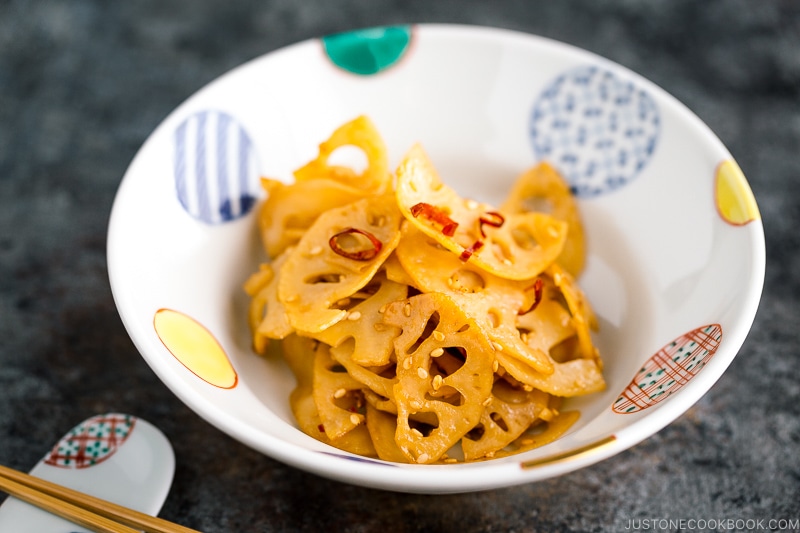
Slight Variations You Can Make with Kinpira Renkon
This Kinpira Renkon recipe is pretty standard throughout the different regions in Japan. There may be some slight variations, but the cooking method and ingredients stay pretty much the same. You can, however, switch things up a little with some of my suggestions below:
- Add in other root vegetables like carrot or gobo (burdock root) to give the dish a dimension of textures and flavors
- Add konnyaku to add a chewy texture
- If you are a spice fiend, feel free to go a little heavy with the red chili peppers
- Change the thickness or shapes (rounds, semi-circles, quarters) of the lotus root for contrasting textures
- Skip sesame seeds
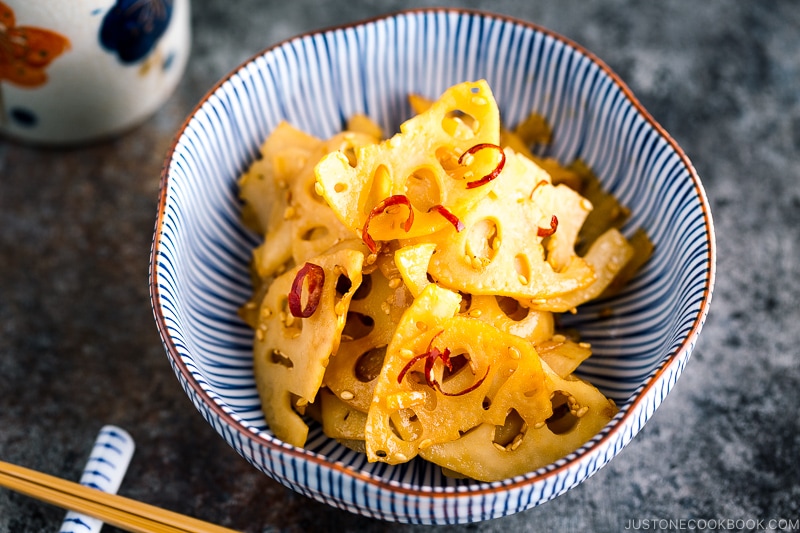
Benefits of Eating Lotus Root
Lotus root, as the name implies, is the root of the lotus flower. This amazing plant is a much-revered vegetable in Southern and Eastern Asia, especially in the Chinese, Korean and Japanese cuisines. It is used as an ingredient in soups, or deep-fried, stir-fried, braised, or cooked in many other interesting ways.
Not only it is crunchy with a creamy and mild sweet starchy texture, but lotus root also has such a fun and interesting appearance that it adds to the presentation of a dish. Lotus root is believed to have many great health benefits, including its ability to improve digestion, reduce cholesterol, lower blood pressure, and boost the immune system. Any of my Chinese readers would tell you that lotus root has a “cooling effect” on the blood, which is useful to help restore the balance of the body. There is no reason not to appreciate what this vegetable has to offer.
Where to Buy Lotus Roots
You can find lotus roots at your local Asian or Japanese grocery stores. They may be sold fresh in the fall when they are in season. Otherwise, they often come in a vacuum pack year-round. Look for the ones that have a light tan color and a nice clean smell. They should be heavy and firm to touch, with no bruise spots around.
Healthy Vegetable Dish for the Family
If trying out more new vegetables is one of your New Year’s resolutions, I hope you give lotus root a try and kinpira renkon is a great recipe to start with. Easy to prepare, delicious and healthy, you will have fun introducing this lovely vegetable to your family.
More Similar Recipes You Might Enjoy
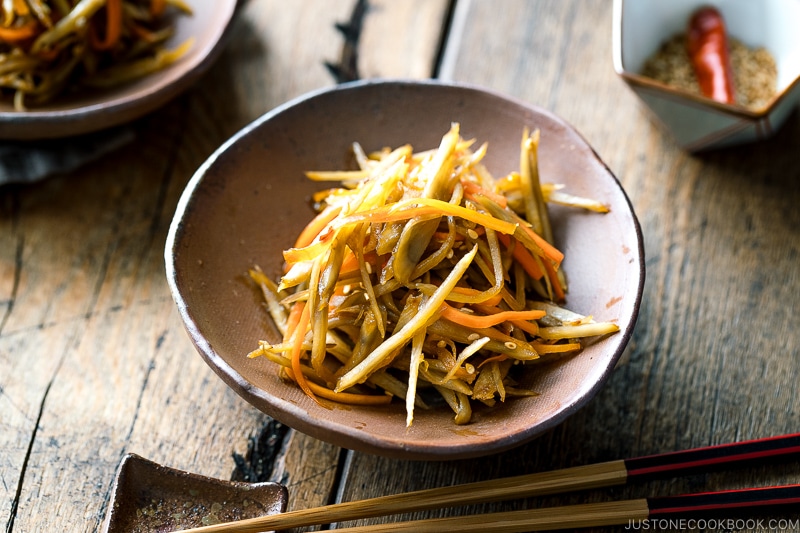
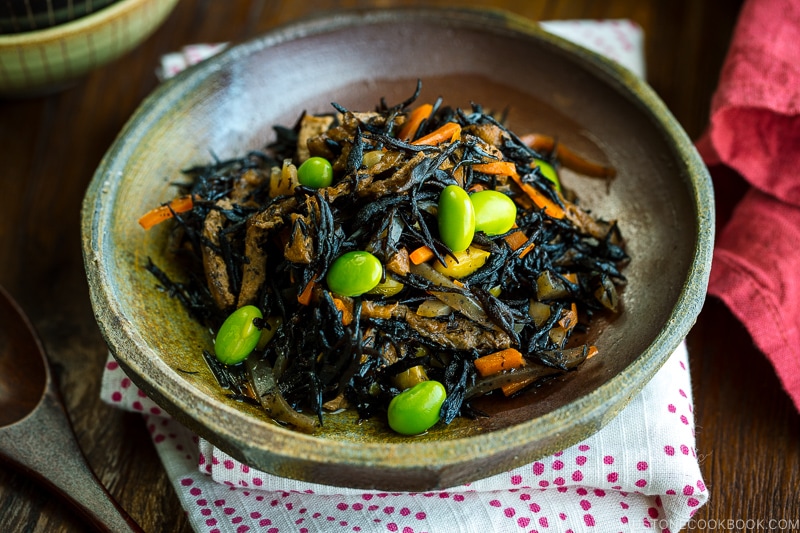
Wish to learn more about Japanese cooking? Sign up for our free newsletter to receive cooking tips & recipe updates! And stay in touch with me on Facebook, Pinterest, YouTube, and Instagram.
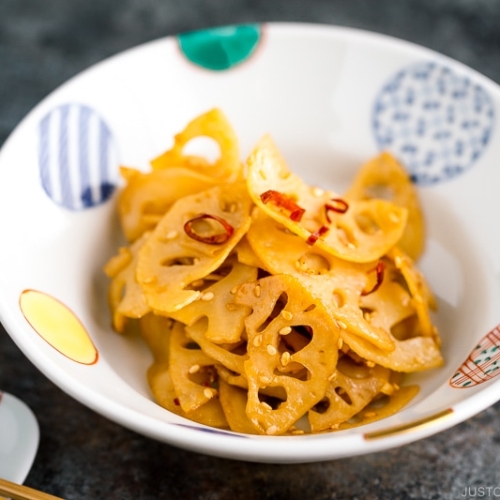
Kinpira Renkon (Lotus Root)
Ingredients
- 8 oz lotus root (renkon) (3 inches, 7.6 cm)
- 1 cup water (for soaking the lotus root)
- 1 tsp rice vinegar (unseasoned) (for soaking the lotus root)
- 1 dried red chili pepper
- 1 Tbsp toasted sesame oil
- ½ Tbsp toasted white sesame seeds
Instructions
- Gather all the ingredients.

- Peel 8 oz lotus root (renkon) and cut in half lengthwise.

- Thinly slice the lotus root. In a bowl, add 1 tsp rice vinegar (unseasoned) and 1 cup water.

- Soak the sliced lotus root in the vinegared water for 3–5 minutes to prevent discoloration. Then, drain the water well.

- Cut the end of 1 dried red chili pepper to remove the seeds, then thinly slice into rounds. If you want this dish to be spicy, keep the seeds.

- In a large frying pan, heat 1 Tbsp toasted sesame oil on medium heat and add the lotus root to stir-fry.

- Once the lotus root is almost translucent (80% cooked), add 1 Tbsp sake, 1 Tbsp mirin, and ½ Tbsp sugar. Let the alcohol evaporate (until there‘s no more alcohol smell).

- Add in the red chili pepper and 1 Tbsp soy sauce and stir to combine. We add the soy sauce last, as it can burn easily.

- When the liquid is almost gone, add ½ Tbsp toasted white sesame seeds and toss all together. Serve hot, lukewarm, or chilled. You can store in an airtight container and keep in the refrigerator for up to 3–4 days.

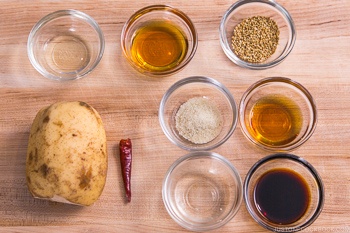
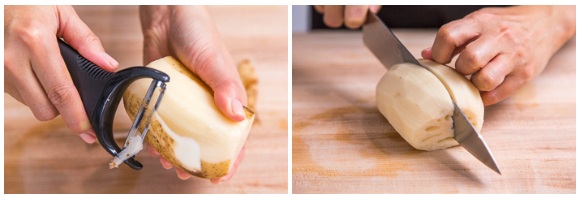
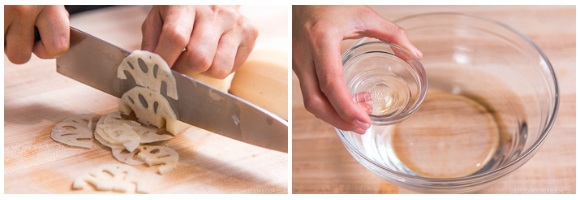
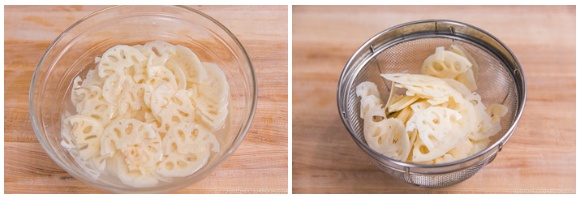

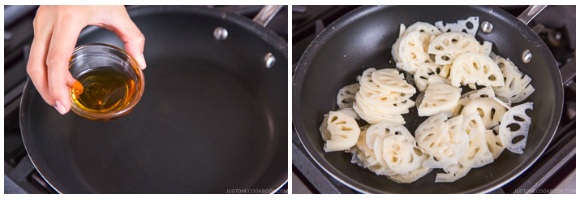
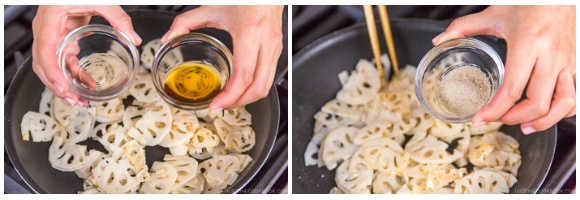
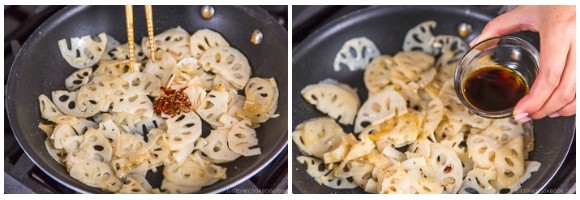
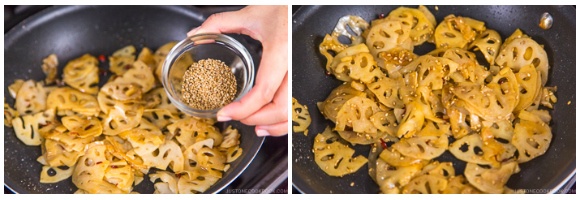










This dish is simply perfect. Second time around, I doubled up on the ingredients and added sliced oyster mushrooms for fun (chef’s kiss). Thank you for another hit recipe!
Hi Cindy! Thank you very much for trying Nami’s recipe and sharing your cooking experience!
We are glad to hear you enjoyed Kinpira Renkon!
I made this for my Chinese grandma, who has been eating lotus root her whole life, and she said it was the best lotus she’d ever had! Thank you so much for the recipe, adding it to the permanent rotation.
Hi May, Wow! We are so happy to hear your grandma enjoyed this dish!😊
Thank you very much for trying Nami’s recipe and for your kind feedback!
This is a very easy and tasty recipe! I made this tonight for the first time. I got a little carried away with one of my homegrown Thai chiles, which made for a very spicy dish because I left in the seeds (as I normally would for Thai dishes that I make). Next time I will lower the heat and leave out the seeds! I can’t wait to try other recipes for preparing renkon.
Hi Jeanne, Wow! Thank you very much for trying this recipe with homegrown Thai chilies! It sounds delicious. Also, it’s a great idea to add a little touch of homegrown items! Thank you for sharing your cooking experience with us.
Here is the list of Renkon recipes on our website: https://www.justonecookbook.com/search/?q=renkon
We hope you enjoy them too.☺️
Awesome recipe, love the taste and texture. Thanks so much!
Hi Yusra!
Thank you very much for trying this recipe and for your kind feedback!
We are so happy to hear you loved the taste and texture! Thank you.😊
Superb recipe . The whole family loves this dish , balance of flavors. .Thanks again fo sharing this great recipe
Hi SUE LIM!
We are so happy to hear you and your family enjoyed this dish!☺️
Thank you very much for your trying this recipe and for your kind feedback!
Really enjpyed these. Found some frozen lotus slices which I split down the middle whilst still semi frozen. Was a really nice side dish….and just so beautiful!
Hi Afra,
Thank you for trying this recipe and for your kind feedback. We are so happy to hear you enjoyed this dish!☺️
Absolutely delicious both hot and warm—despite the triple serving per person there wasn’t enough left to taste cold 😊
Hi Olesya! Aww thank you so much for trying this recipe! So glad you liked it. Thank you for your kind feedback. 🙂
[…] Kinpira Renkon (Stir-Fried Lotus Root) […]
[…] Kinpira Renkon (stir-fried lotus root) […]
Delicious!! This was my first time trying lotus root and kinpira renkon. I toasted the sesame seeds (something else I’d never done) and it gave the dish a beautiful nutty flavor that was just delicious with the sweetness of the sugar and mirin.
I’ll be honest, I had the bright idea to stir fry broccoli in the same way in another pan… Not so great. I’ll have to find another veggie to pair with the lotus root next time. 🙂 Carrot would be nice or maybe the burdock root if I can find any here.
Hi Sara! Thank you so much for trying this recipe and I’m so glad you enjoyed it! Yes, toasting the sesame seeds right before using brings AMAZING fragrance and flavors and I do the quick toasting until one sesame seed starts popping (even though the sesame seed package says “toasted/roasted”). I enjoy doing that too as it is a nice fragrance. Lotus root has some earthy flavor so it would be nice to pair up with gobo or carrot or make a totally different flavored dish as “stir fry” can be more soy sauce style? 🙂
Love this dish… but the print button does not work for me – can you fix please ?
Hi Christopher! I apologize for the inconvenience. We were working behind the scene and now the new website is launched today. It should work now. 🙂
Great vegetable side dish! Perfect balance of sweet, salty and spicy. This was my first time trying renkon, and I really enjoyed it!
Hi Alex! Thank you for trying this recipe! I’m so happy to hear you enjoyed it. 🙂
Glad you liked my comment. The book was some collection of articles from a newspaper–columns, I guess I should say–but the title I made a memo of did not work in the retrieval system. Sorry for having no way to give credit!!
Elderly or disabled persons may find this way of removing SKIN helpful: Use aluminum foil crunched up in a ball to scrape away the skin or RENKON or GOBO, etc. It still takes some power, but it often seems easier than peeling.
Source: a Japanese-language library book I have returned and tried in vain to reborrow!
Hi Christina! What a cool tip! Thanks so much for sharing! We can use the back of knife too but that could be more dangerous than the aluminum foil. Thank you so much!
What a super looking dish! I almost never cook with lotus root — definitely a veggie I need to investigate more. And I really like the cooking technique in this dish. Great recipe – thanks.